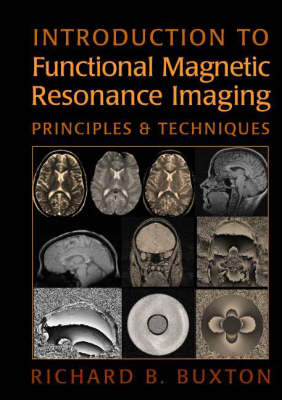
Introduction to Functional Magnetic Resonance Imaging
Cambridge University Press (Verlag)
978-0-521-58113-4 (ISBN)
- Titel erscheint in neuer Auflage
- Artikel merken
Functional Magnetic Resonance Imaging (fMRI) is now a standard tool for mapping activation patterns in the human brain. This highly interdisciplinary field involves neuroscientists and physicists as well as clinicians, and the range, flexibility and sophistication of the techniques being used are increasing rapidly. In this book, Richard Buxton, a leading authority on fMRI, provides an invaluable introduction to how fMRI works, from basic principles and the underlying physics and physiology, to newer techniques such as arterial spin labeling and diffusion tensor imaging. The book also includes discussion of how fMRI relates to other imaging techniques (such as Positron Emission Tomography, or PET) and a guide to the statistical analysis of fMRI data. This book will be useful both to the experienced researcher using fMRI, and the clinician or researcher with no previous knowledge of the technology.
Introduction; Part I. An Overview of Functional Magnetic Resonance Imaging: I A. Introduction to Functional Neuroimaging: 1. Energy metabolism in the brain; 2. Cerebral blood flow; 3. Brain activation; I B. Introduction to Functional Magnetic Resonance Imaging: 4. Nuclear magnetic resonance; 5. Magnetic resonance imaging; 6. Imaging functional activity; Part II. Principles of Magnetic Resonance Imaging: II A. The Nature of the Magnetic Resonance Signal: 7. Basic physics of magnetism and NMR; 8. Relaxation and contrast in MRI; 9. Diffusion and the MR signal; II B. Magnetic Resonance Imaging: 10. Mapping the MR signal; 11. MRI techniques; 12. Noise and artifacts in MR images; Part III. Principles of Functional Magnetic Resonance Imaging: III A. Perfusion Imaging: 13. Principles of tracer kinetics; 14. Contrast agent techniques; 15. Arterial spin labeling techniques; III B. Blood Oxygenation Level Dependent (BOLD) Imaging: 16. The nature of the BOLD effect; 17. Mapping brain activation with BOLD-fMRI; 18. Statistical analysis of BOLD data; 19. Efficient design of BOLD experiments; Appendix: the physics of NMR; Index.
| Erscheint lt. Verlag | 7.1.2002 |
|---|---|
| Zusatzinfo | 34 Halftones, unspecified; 134 Line drawings, unspecified |
| Verlagsort | Cambridge |
| Sprache | englisch |
| Maße | 184 x 263 mm |
| Gewicht | 1432 g |
| Themenwelt | Medizin / Pharmazie ► Medizinische Fachgebiete ► Neurologie |
| Medizinische Fachgebiete ► Radiologie / Bildgebende Verfahren ► Radiologie | |
| ISBN-10 | 0-521-58113-3 / 0521581133 |
| ISBN-13 | 978-0-521-58113-4 / 9780521581134 |
| Zustand | Neuware |
| Informationen gemäß Produktsicherheitsverordnung (GPSR) | |
| Haben Sie eine Frage zum Produkt? |
aus dem Bereich



